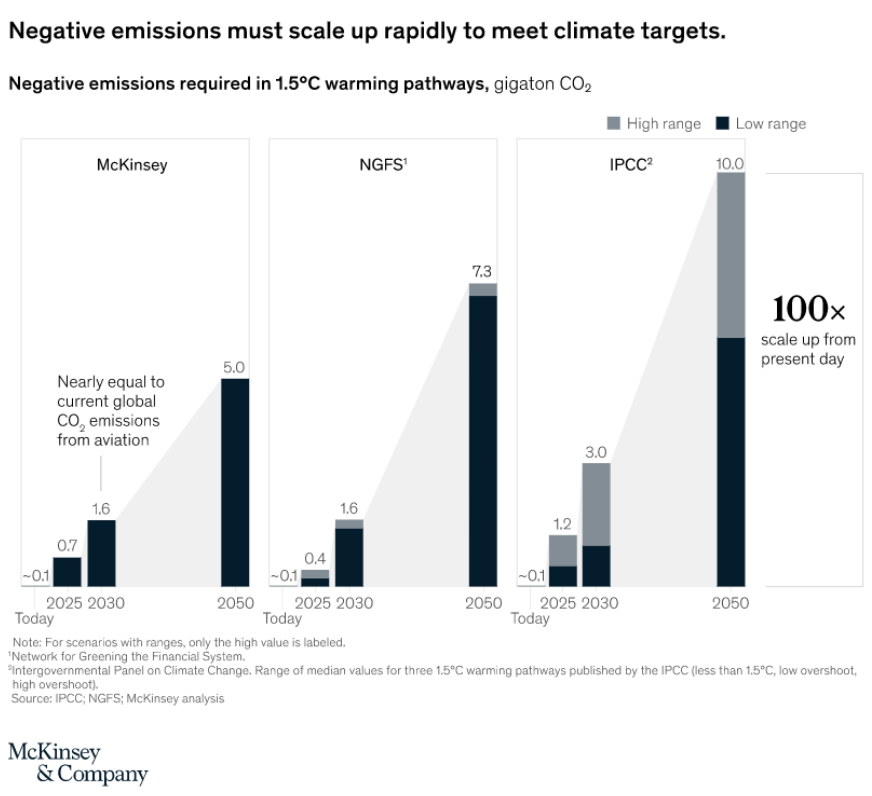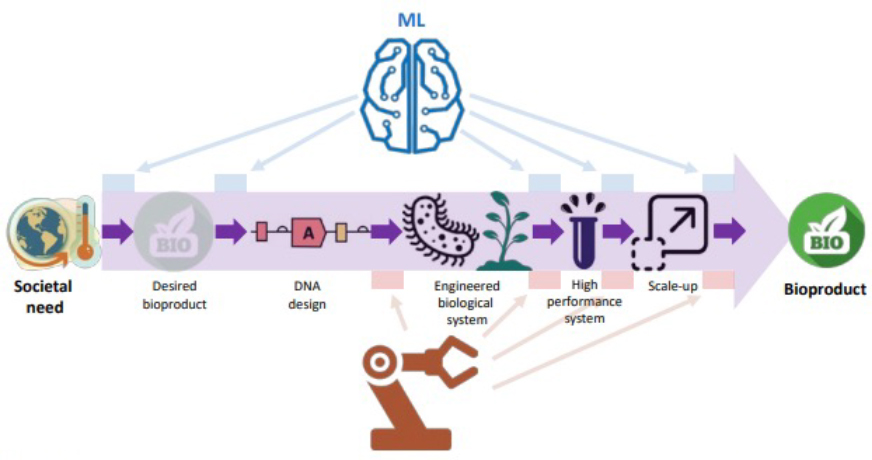Contributing Editors: J. Boen and A. Breckenridge
Net zero goals are imminent
In line with the goals set at the signing of the Paris Agreement¹ six years ago, many corporate entities have begun releasing emissions reduction deadlines for their operations. Corporates such as Equinor, Exxon Mobil, BASF, and Chevron have all announced goals of decarbonizing to achieve net zero by 2050². Some have even made more ambitious announcements to decarbonize and drive revenue for their operations. Microsoft has set the goal of being carbon negative by 2030³. Dow announced that through investments in a net zero ethylene facility, it plans to add $3 billion⁴ to earnings by 2030. Additionally, Dow has announced that by 2035 it wants all of its products being used in packaging applications to be 100% recyclable⁵. While this is great to see, the goals many have set remain overly ambitious. McKinsey has reported that for the world to reach net zero by 2050, there needs to be a 100x improvement⁶ in the development of carbon-negative projects.

Source: McKinsey & Company
Enter industrial biology
As we search for modalities through which we can repurpose waste CO₂, industrial biology provides a compelling solution. CO₂ is both widely available and relatively cheap to acquire, making it an ideal feedstock for biomanufacturing processes. Many emerging industrial biotechnology companies have developed processes that utilize CO₂ as feedstock, giving way to new technologies we can use to address the carbon problem. For example, Cemvita Factory has developed a carbon-negative biomanufacturing platform that uses CO₂ from depleted oil reservoirs to produce chemicals like ethylene. Cemvita claims⁷ that its bioethylene platform can utilize up to 1.7 million tons of CO₂ and produce 1 billion pounds of bioethylene per year. LanzaTech is another company that emerged with ambitions of repurposing CO₂ using biotechnology to create valuable products like ethanol⁸ and ethylene⁹. Biomason wants to use biotechnology to revolutionize the cement industry. An industry whose emissions account for roughly 8% of global CO₂ emissions each year¹⁰. Harnessing the use of biotechnology will substantially reduce the amount of carbon we’re emitting into the atmosphere each year and allow everyone to have a better shot at reaching their climate goals by 2050.
Engineering improvements will expand the CO₂ opportunity set
As the capabilities of industrial biology design techniques improve, the opportunities to target CO₂ will only become greater. Innovations will open novel opportunities for industrial biotechnology to mitigate emissions by avoiding petrochemicals or using emissions as feedstock to produce bioproducts with favorable economics. Companies like Ginkgo Bioworks, Amyris, and Geno are currently leveraging large internal datasets to drive down costs by improving important bioproduction metrics such as yield (aka how efficiently do the microbes convert feedstock to product?), titer (a measurement of the concentration of a substance in a solution – typically measured in g/L), and rate (aka how quickly are the microbes producing the desired product?). Our conviction in industrial biotechnology lies in the underlying belief that the acceleration of engineering efforts is imminent and will be meaningfully heightened as companies across the industry begin to leverage data for optimization. The opportunities we see today will assuredly not be the ones that begin emerging tomorrow, the field is at an inflection point that we are poised to take advantage of.

Pivotal opportunities ahead for industrial biotechnology
With the aforementioned in mind, there lies a significant opportunity ahead for biotechnology applications to deliver an immense impact on global decarbonization efforts. Decarbonizing our manufacturing processes for chemicals, agriculture, materials, and fuels will substantially reduce the amount of CO₂ emitted by the world. The Biotechnology Innovation Organization (BIO) estimates that by 2030, at least 3 billion tons of CO₂ could be mitigated by using existing biotechnologies¹¹. Furthermore, the utilization of waste CO₂ will allow for the realization of previously underexplored value from existing and future emissions. We believe that the time to begin allocating capital to novel biotechnologies is now. The industrial biotechnology industry has been preparing for this very moment in time for the past twenty years. From the biofuels era¹² to today, innovations have been trending toward the opportunistic position we find ourselves in today. The goals we’ve set for 2050 may seem far off, but they will be here before we know it.
References
- The Paris Agreement: https://unfccc.int/process-and-meetings/the-paris-agreement/the-paris-agreement
- Climate Action 100: https://www.climateaction100.org/whos-involved/companies/
- Microsoft’s sustainability commitments: https://blogs.microsoft.com/blog/2022/03/10/an-update-on-microsofts-sustainability-commitments-building-a-foundation-for-2030/
- Dow 2030 earnings projection increase with new net-zero unit: https://www.reuters.com/business/dow-expects-add-3-bln-core-earnings-by-2030-2021-10-06/
- Dow’s sustainability commitments: https://corporate.dow.com/en-us/science-and-sustainability/commits-to-reduce-emissions-and-waste.html
- McKinsey & Co. – Negative Emissions Report: https://www.mckinsey.com/capabilities/sustainability/our-insights/how-negative-emissions-can-help-organizations-meet-their-climate-goals
- Cemvita Factory – Carbon Negative Biomanufacturing: https://www.cemvitafactory.com/applications/carbon-negative-biomanufacturing
- Twelve and LanzaTech – Converting CO₂ to ethanol: https://www.greencarcongress.com/2022/03/20220304-12.html
- LanzaTech – Converting CO₂ to ethylene: https://www.thechemicalengineer.com/news/lanzatech-produces-ethylene-directly-from-co2/
- The carbon footprint of concrete: https://www.nature.com/articles/d41586-021-02612-5
- BIO – Biotech Solutions for Climate Report: https://www.bio.org/sites/default/files/2021-04/Climate%20Report_FINAL_1.pdf
- Bain & Co. biofuels bust analysis: https://www.bain.com/insights/biofuels-from-boom-to-bust/


Recent Comments